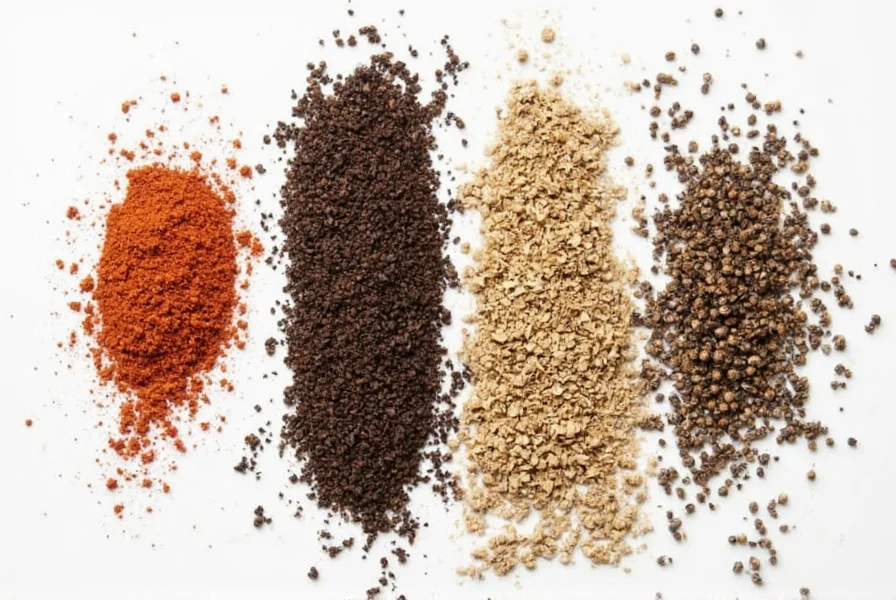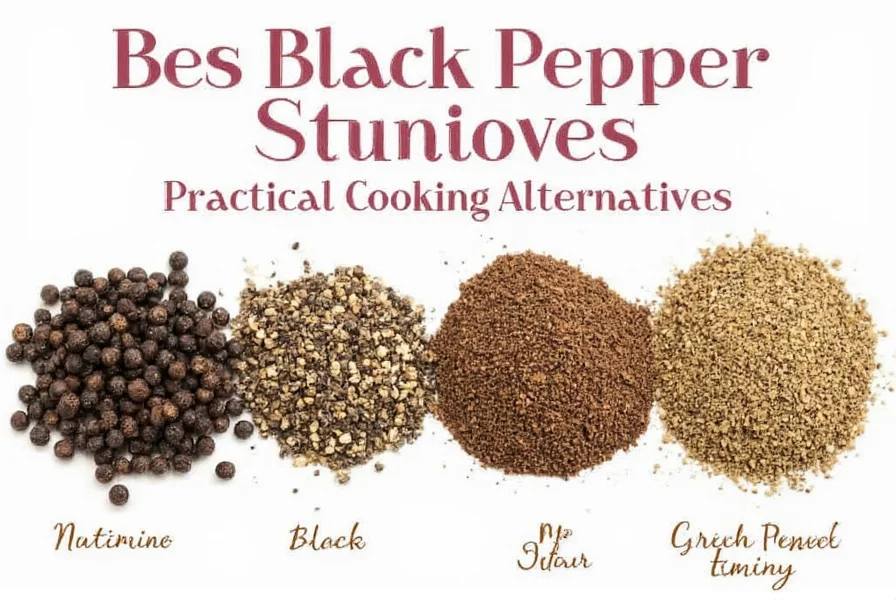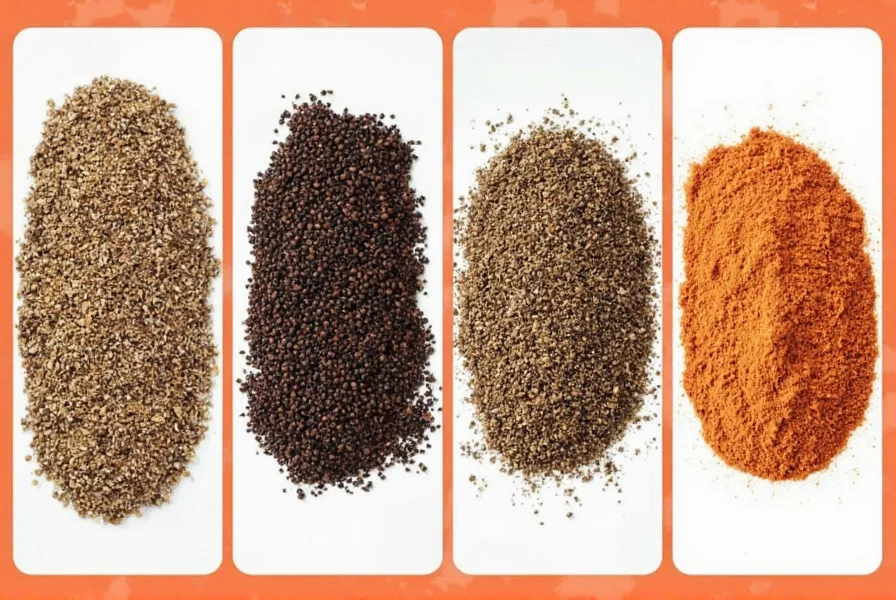Running out of black pepper mid-recipe doesn't have to ruin your culinary creation. Whether you're dealing with an empty spice jar, dietary restrictions, or simply want to experiment with different flavor profiles, knowing effective black pepper alternatives keeps your cooking on track. This comprehensive guide explores the most practical black pepper substitutes backed by flavor chemistry and culinary testing.
Why You Might Need a Black Pepper Substitute
Black pepper scarcity isn't the only reason to seek alternatives. Some home cooks require black pepper substitutes for creamy sauces to maintain visual appeal, while others need non-spicy black pepper alternatives for sensitive palates. Medical conditions like pepper allergies or digestive sensitivities also necessitate reliable replacements. Understanding these scenarios helps select the most appropriate substitute for your specific needs.
Top Black Pepper Substitutes Ranked by Culinary Application
| Substitute | Flavor Profile | Best For | Conversion Ratio |
|---|---|---|---|
| White Pepper | Milder, earthier, less complex | Creamy sauces, light-colored dishes | 1:1 replacement |
| Allspice | Warm, slightly sweet, complex | Meat rubs, stews, marinades | 1/2 tsp allspice = 1 tsp black pepper |
| Cayenne Pepper | Sharp heat, less floral notes | Spicy dishes, hearty soups | 1/4 tsp cayenne = 1 tsp black pepper |
| Paprika + Ginger Blend | Earthy with subtle warmth | Vegetable dishes, light proteins | 1/2 tsp paprika + 1/4 tsp ginger = 1 tsp black pepper |
Detailed Analysis of Each Black Pepper Alternative
White Pepper: The Seamless Substitute for Light-Colored Dishes
White pepper makes an excellent black pepper substitute when visual presentation matters. Processed from the same plant (Piper nigrum) but with the outer layer removed, white pepper delivers similar heat without the dark specks. This characteristic makes it the premier black pepper substitute for creamy sauces, mashed potatoes, and light-colored soups where black specks would be undesirable. Chefs often prefer white pepper in béchamel and alfredo sauces for this precise reason.

Allspice: The Complex Flavor Alternative
Despite its name, allspice contains none of the "all" spices—it's a single berry (Pimenta dioica) with flavor notes reminiscent of cinnamon, nutmeg, and cloves. When seeking a black pepper substitute with more complexity, allspice works remarkably well in meat dishes and hearty stews. Its warm profile complements slow-cooked dishes where black pepper's sharper notes might dominate. For those exploring non-spicy black pepper alternatives, allspice provides depth without significant heat.
Cayenne Pepper: The Heat-Forward Option
Cayenne delivers significantly more heat than black pepper while lacking its floral complexity. This makes it an ideal black pepper substitute when you want to increase spiciness in dishes like chili, gumbo, or spicy marinades. Use sparingly—cayenne's heat intensity means you need considerably less than the black pepper amount called for in recipes. This substitute works best when your recipe already contains other aromatic spices to compensate for black pepper's missing floral notes.
Paprika and Ginger Blend: The Balanced Approach
For those seeking a black pepper substitute that mimics both heat and complexity, a blend of sweet paprika and fresh ginger creates a surprisingly effective alternative. The earthiness of paprika combined with ginger's warm bite approximates black pepper's flavor profile without overwhelming heat. This combination serves as an excellent black pepper substitute for delicate dishes like fish, chicken, or vegetable preparations where maintaining subtle flavors matters.
Special Considerations for Dietary Restrictions
Those with pepper allergies require careful black pepper substitute selection. While white pepper comes from the same plant and isn't suitable, smoked paprika provides a safe alternative with similar earthy notes. For low-sodium diets, black pepper substitutes become essential as many salt-free seasoning blends rely heavily on black pepper. In these cases, a combination of garlic powder, onion powder, and a touch of cayenne creates satisfying flavor without sodium or pepper.
Common Mistakes When Using Black Pepper Substitutes
Many home cooks make critical errors when substituting black pepper. The most frequent mistake involves improper conversion ratios—using equal amounts of cayenne as black pepper creates inedibly spicy dishes. Another common issue is substituting based solely on heat level while ignoring black pepper's complex flavor profile. For authentic results, consider both heat measurement and aromatic components when selecting your black pepper substitute.
When to Avoid Substitutes Entirely
Certain recipes simply require authentic black pepper for proper flavor development. Classic dishes like steak au poivre or coq au vin rely on black pepper's specific chemical compounds that substitutes cannot replicate. In these instances, seeking black pepper substitutes for creamy sauces or other applications might compromise the dish's integrity. Understanding when substitution works versus when it doesn't separates adequate cooking from exceptional results.
Final Recommendations for Black Pepper Substitutes
The ideal black pepper substitute depends entirely on your specific culinary context. For most home cooking scenarios, white pepper serves as the most versatile black pepper substitute that maintains similar heat levels without visual disruption. When developing complex flavors in slow-cooked dishes, allspice provides superior depth. For those exploring non-spicy black pepper alternatives, a carefully balanced paprika-ginger blend delivers satisfying results without overwhelming heat.












 浙公网安备
33010002000092号
浙公网安备
33010002000092号 浙B2-20120091-4
浙B2-20120091-4